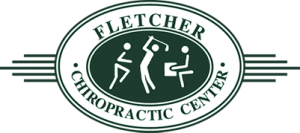Chiropractic care for children- when should your child be adjusted? News from Fletcher Chiropractic in Boise, ID
March 9, 2016 | By Jillaine W | No Comments
When should your child be getting chiropractic care?
Parents are very well educated in keeping up to date on their children’s health and wellness. Most kids have their teeth checked at the dentist, eyes examined at school, height and weight assessed at well-child examinations, and have pre-participation sports physicals performed yearly. These are all best practices to ensure that your child is growing and developing according to plan, and these regular visits are important to the health and well-being of your child. What is often overlooked, however, is your child’s spinal health, and it is just as important to assess the development of their neck and back.
During a child’s development, they will undoubtedly take a lot of tumbles and falls while learning to walk, rough-housing with friends, and being involved in sports and recreational activities. The stress of carrying a backpack every day and sitting at a desk for hours can also have effects on a child’s posture. All of these little traumas have the tendency to jar the spine and joints of the body, thus causing misalignments in the spine. Spinal misalignments, or subluxations, can be painful or uncomfortable and will not go away on their own.
How might a subluxation present and how would a parent know their child might have subluxations?
As stated earlier, subluxations can cause discomfort or pain which your child may tell you about. Oftentimes pain will present itself during specific activities- swinging a baseball bat, climbing up the stairs of the slide, or when they wake up in the morning after sleeping on their stomach. If your child does not come right out and tell you they are in pain, there are other things to look for. You may notice they have one shoulder higher than the other or their neck doesn’t seem to turn as far one way compared to the other. Perhaps they have stiffness or an inability to bend forward and touch their toes, or maybe you notice when they walk that one foot flares outward. These are all possible signs of misalignment, and should be evaluated by a chiropractor to determine if an adjustment is needed to correct the problem.
What can you expect when bringing your child in to be examined?
A chiropractor will ask questions of both the child and parent to obtain as much information about the patient and their case as necessary. They will then perform a series of standard orthopedic tests to determine where the pain/discomfort/dysfunction is stemming from. The doctor will also evaluate the presence of any curvature to the spine which might indicate a scoliosis. When these tests are complete, they will then perform a chiropractic-specific exam to assess for subluxation. If it is determined that chiropractic is the best treatment option, a corrective adjustment will be delivered.
How do we adjust your child?
The child’s age and size are taken into account when decided how to adjust them. Babies and toddlers will often be adjusted manually with light fingertip pressure to the spine, or with the use of a mechanical instrument called an activator. An activator can deliver a very delicate and precise adjustment in a comfortable manner to correct misalignments. Older children and teens will often be adjusted very similarly to adults, but with less intensity. All adjustments are extremely specific and designed to decrease pressure on the nerves which will alleviate pain and straighten the spine. Chiropractic adjustments are both comfortable and safe.
If you have any further questions about whether your child needs to be adjusted, or would be interested in having his or her spine evaluated, please call our office to schedule an appointment. Mention this blog post for a FREE consult/exam ($70 value).
In Good Health,
Dr. Jillaine
